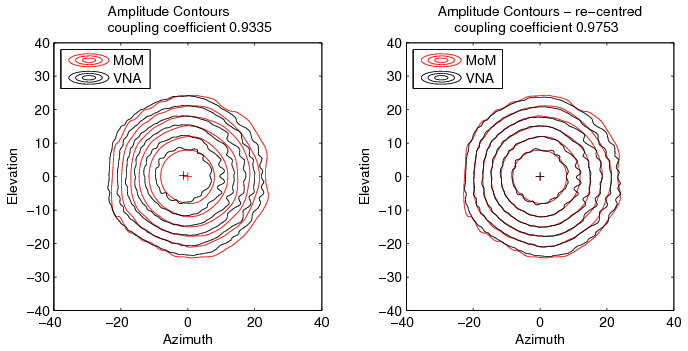Multi-Beam Optics
STEAM-R
STEAM-R (Stratosphere-Troposphere Exchange And climate Monitor Radiometer) mission is currently being developed as part of the next ESA Earth Explorer Mission, PREMIER, as the first submillimeter multi-beam limb-sounder for atmospheric research.
The prime contractor for STEAM-R is Omnisys Instruments and the focal plane array optics has been designed by Axel Murk, Mark Whale, Matthias Renker and their colleagues at the Institute of Applied Physics (IAP) at the University of Bern under a research and development sub-contract as part of the overall project activities. It consists of two multi-faceted mirrors: one with 7 parabolic facets and one with 7 hyperbolic facets. The first of these mirrors has 7 cylindrical apertures to accommodate Ultra-Gaussian feed horns. The monolithic design with multi-faceted mirrors was chosen to minimize alignment errors between the beams. In order to achieve the desired beam spacing on the sky, the beams must be closely packed in the array. This leads to a high level of truncation at the facet boundaries (up to -17dB, as compared with typical levels of -35 dB), and therefore the need for the machining of very sharp interfaces between the facets.
Thomas Keating, under contract from Almatech has recently manufactured a breadboard model of the array optics. This included these two multifaceted mirrors, feed horns, a polarizing grid and the support structure as shown in the photograph below.
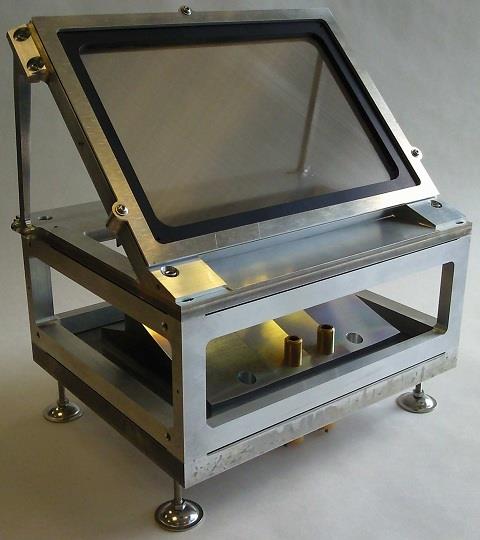
The optics was checked with extensive CMM (co-ordinate measuring machine) measurements, for example the feed horn apertures checked in the report shown below:
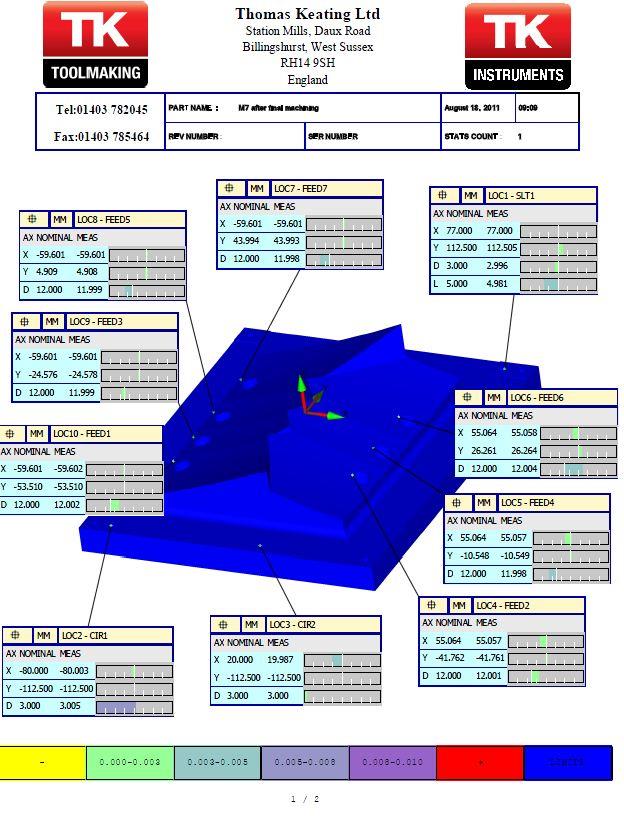
For the mirror shown above, up to 1200 points were measured on each facet. The surface accuracy is given in the table below, where a common offset has been fitted to all 7 facets. This illustrates the success of the monolithic construction in aligning the individual facets.
| Facet | RMS error |
| 1 | 0.0014 mm |
| 2 | 0.0034 mm |
| 3 | 0.0012 mm |
| 4 | 0.0031 mm |
| 5 | 0.0007 mm |
| 6 | 0.0035 mm |
| 7 | 0.0036 mm |
In the following photograph, the alignment of the whole system was being checked on the CMM:
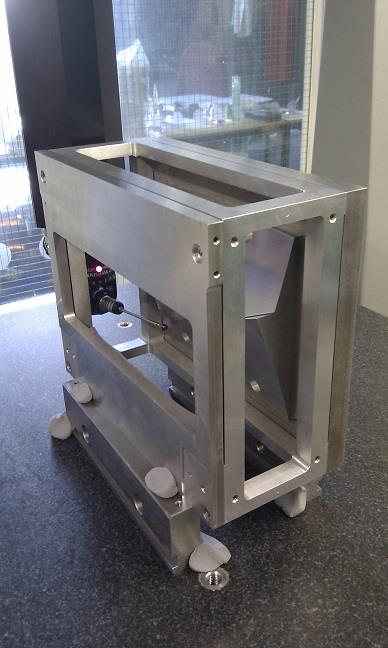
Beam Patterns
The performance of this breadboard model has now been measured at the IAP, Bern, and gives an impressive match between the GRASP-predicted results and the measurement.
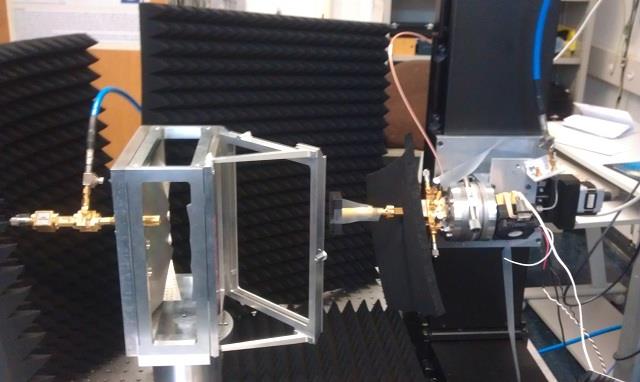
The 2D near field beam pattern, at 340 GHz, is given in the plots below.
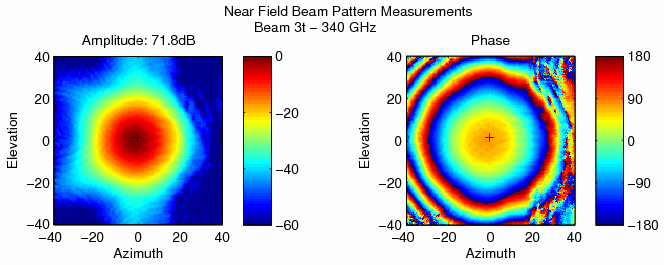
Comparison with Simulation
The performance of the STEAM-R focal plane optics has been simulated with GRASP using the Method of Moments. The beam pattern shown below is the result of this simulation at 340 GHz, and the following contour plots overlay the measured and predicted beam patterns.
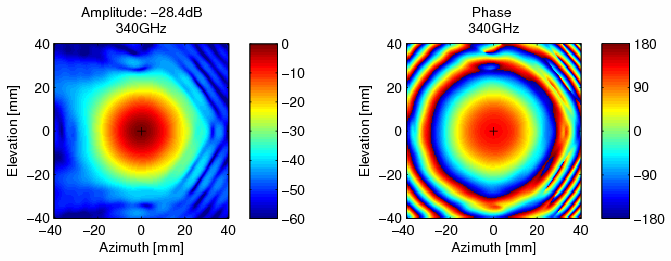
323 GHz
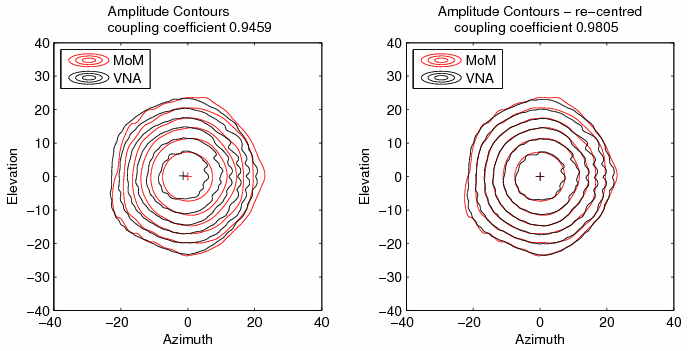
340 GHz
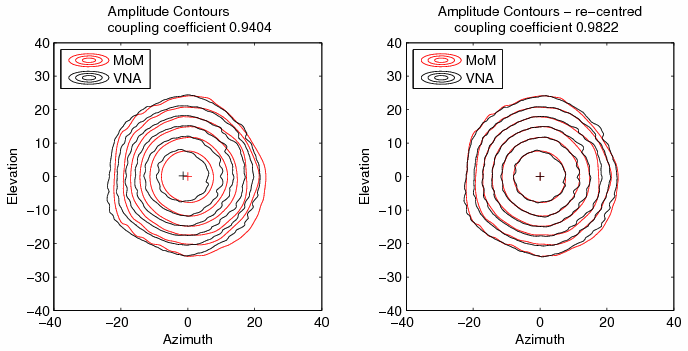
357 GHz
